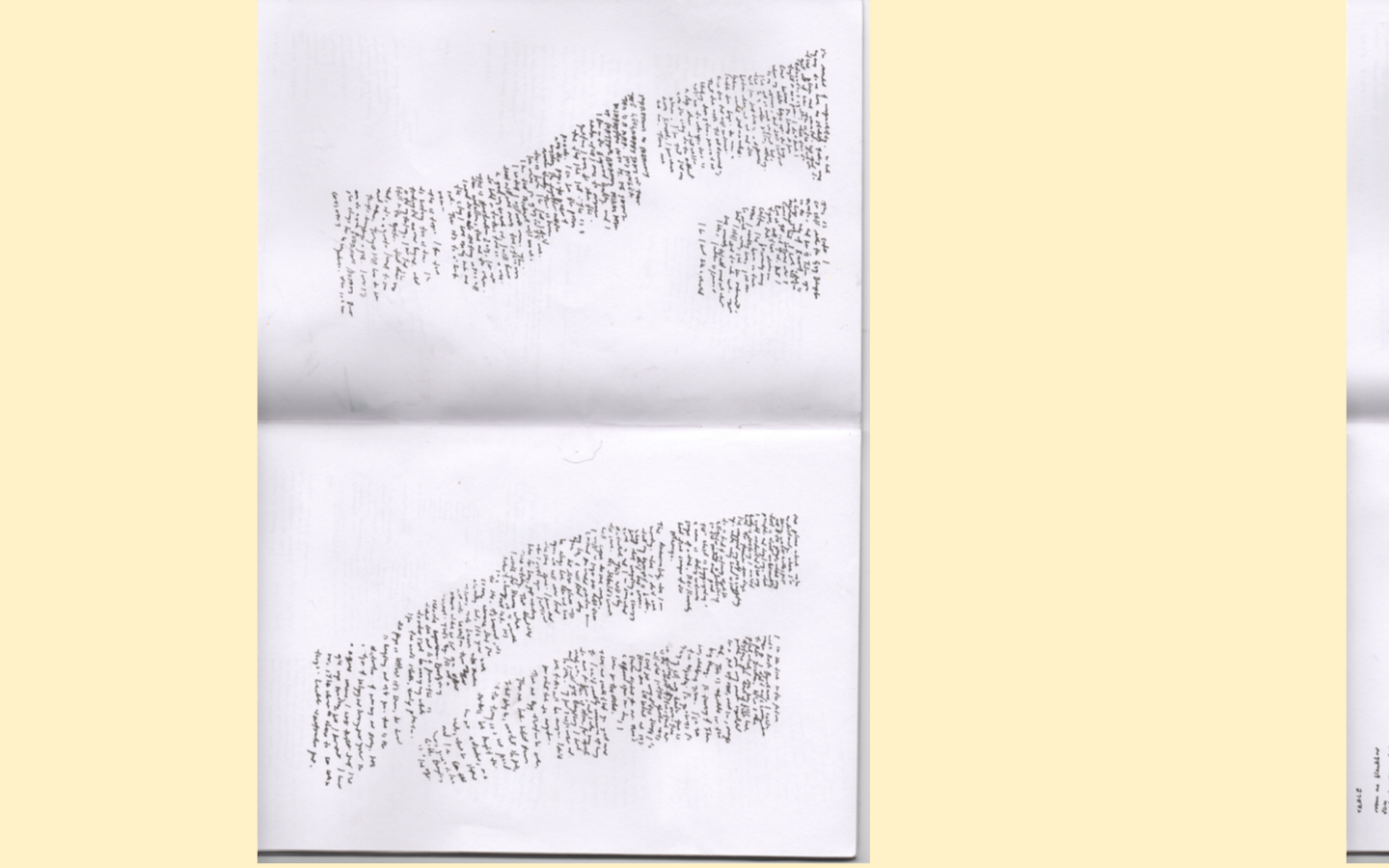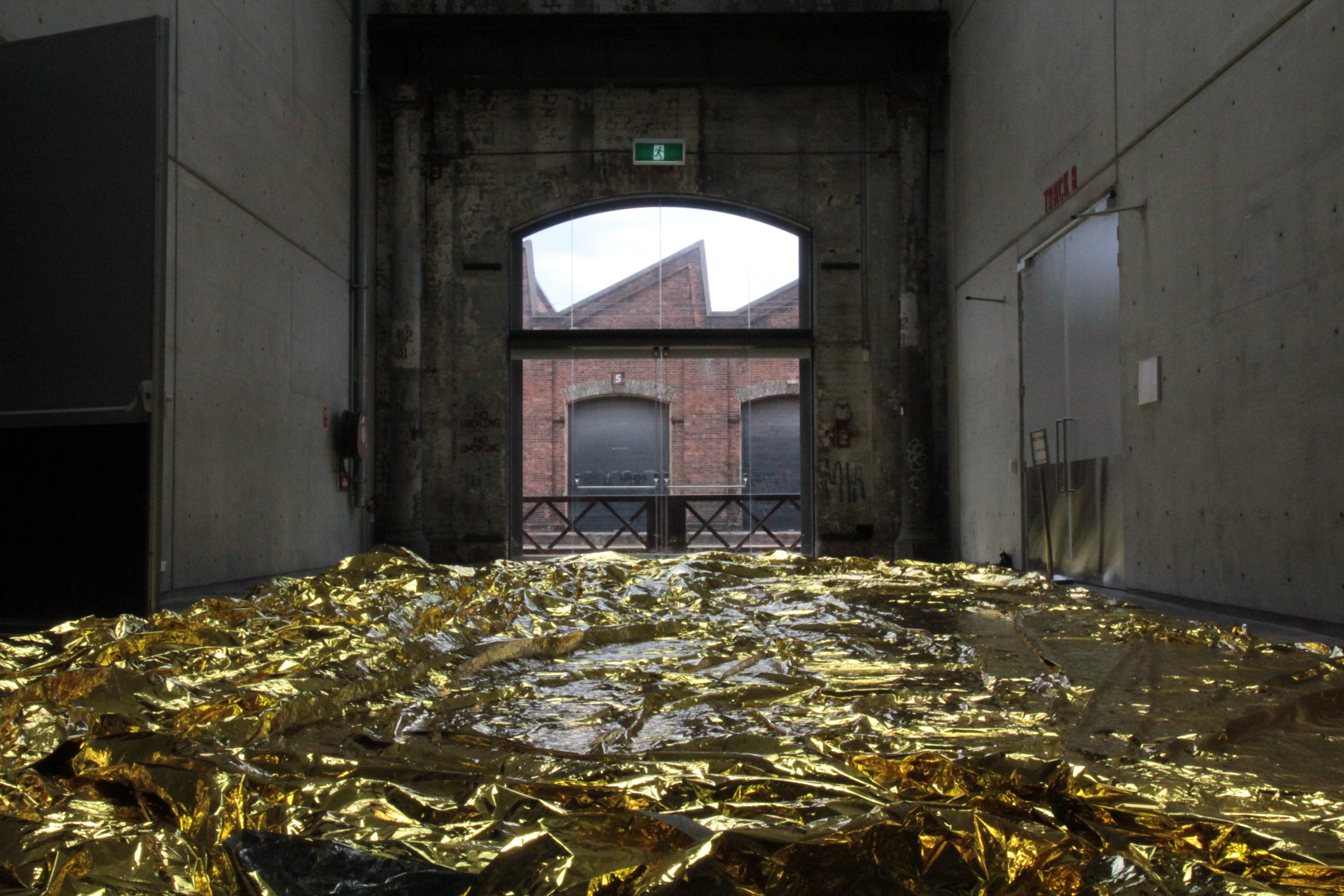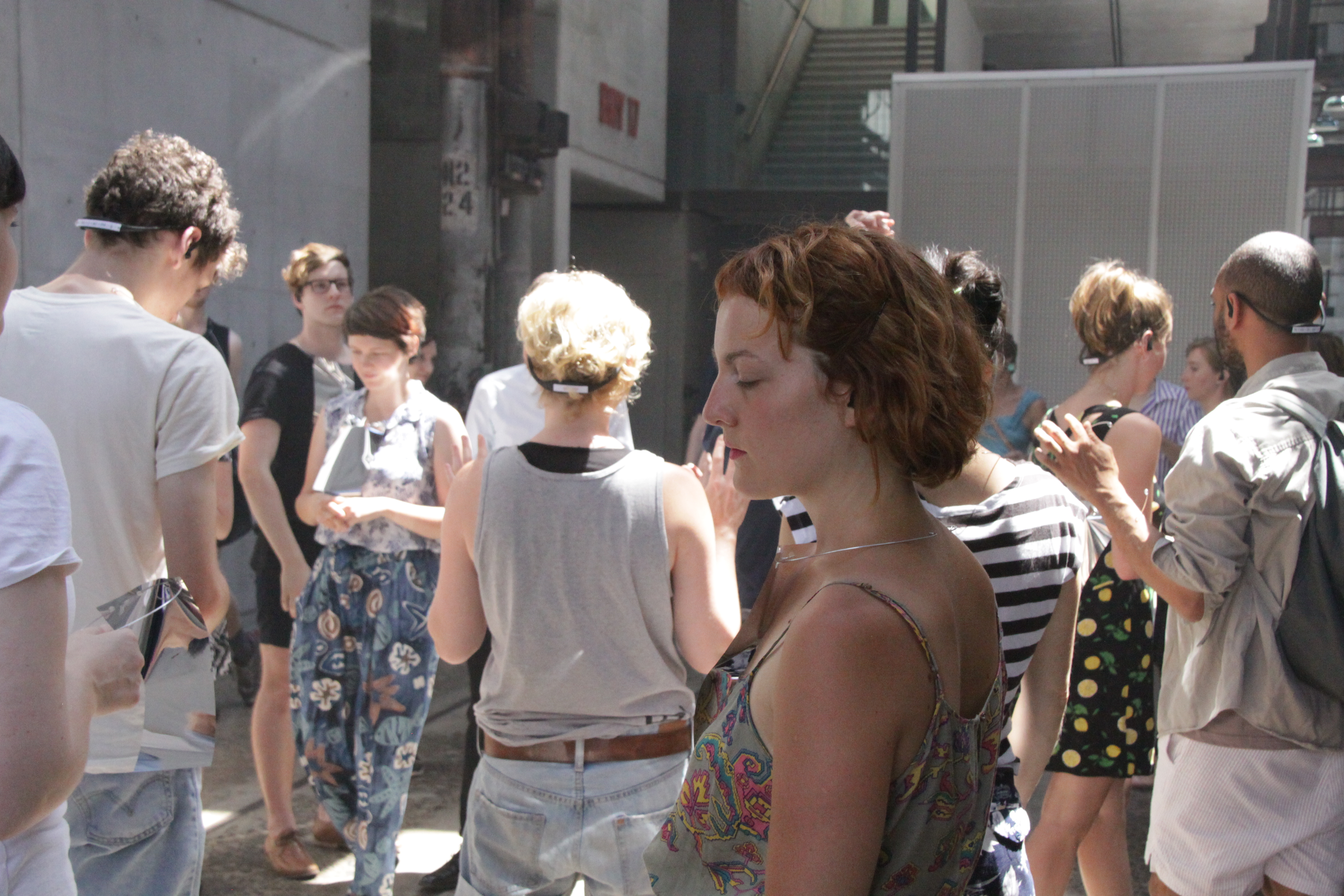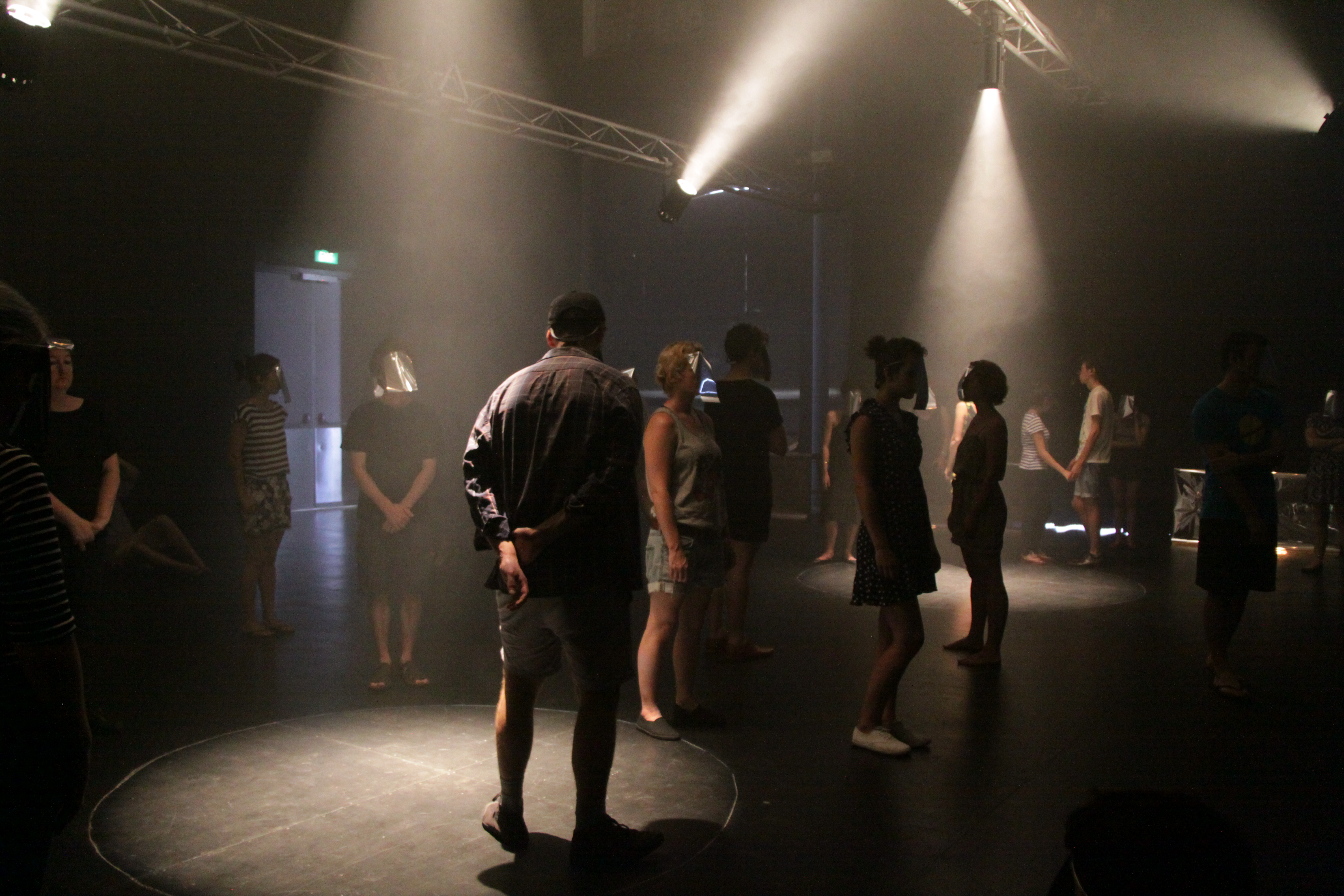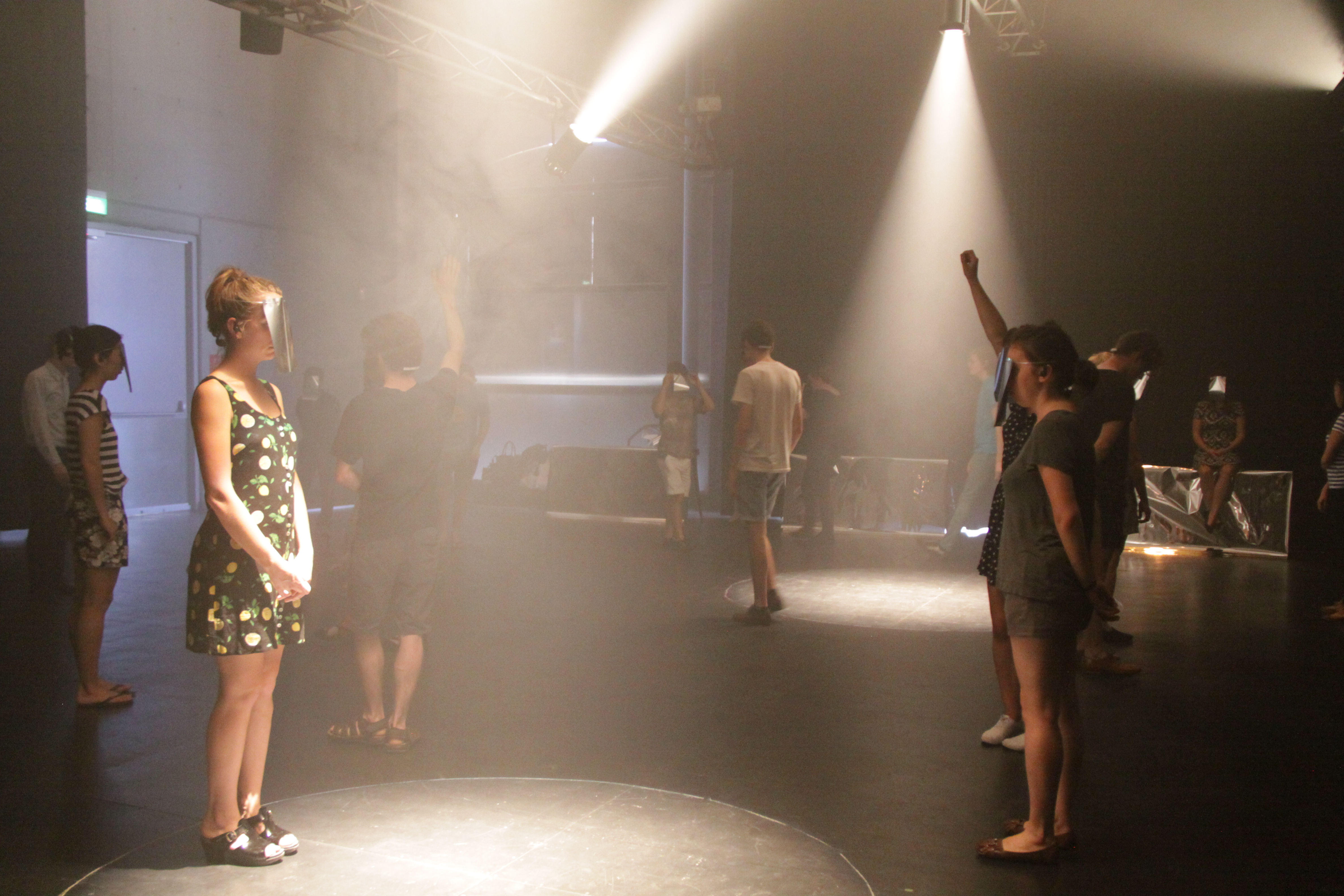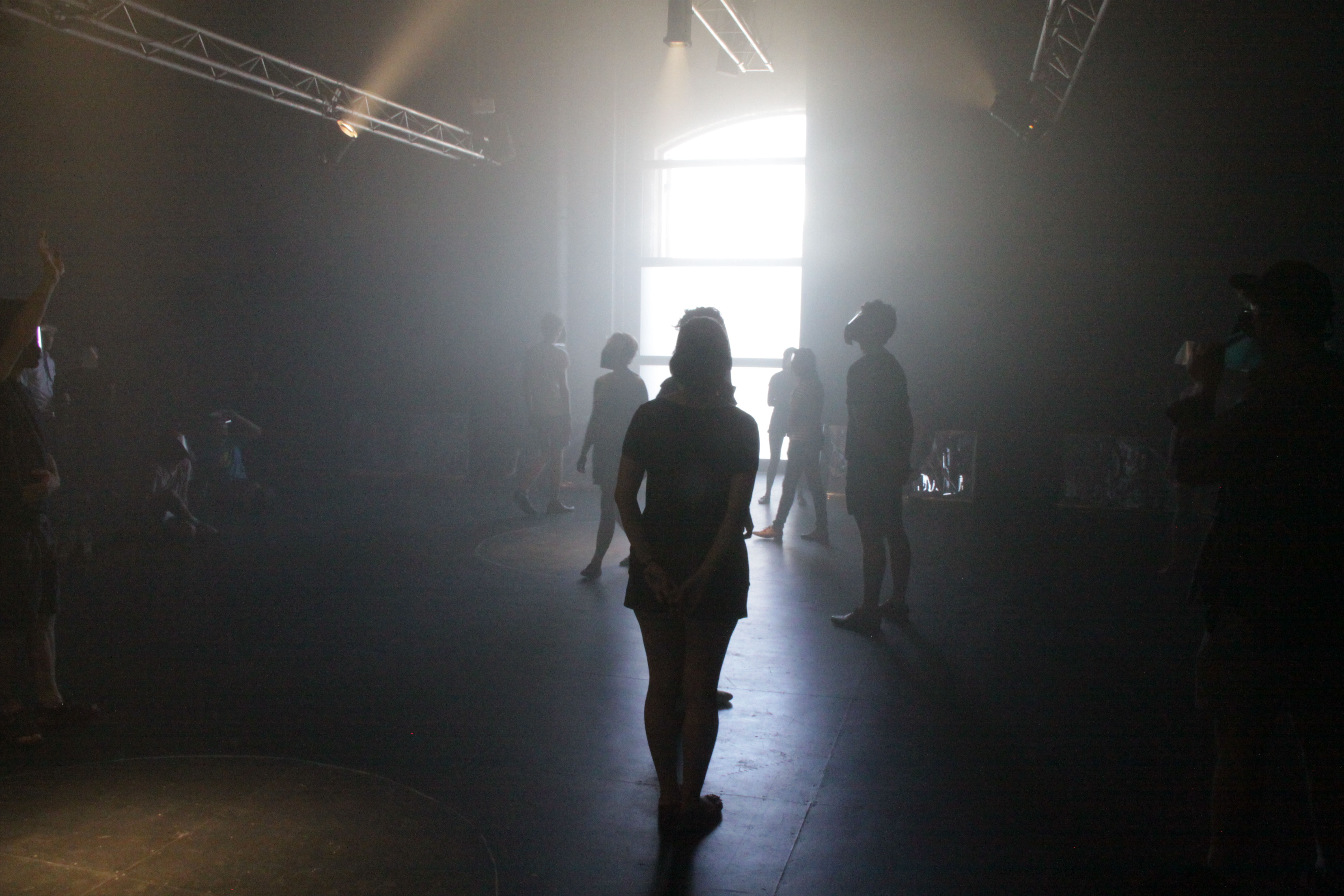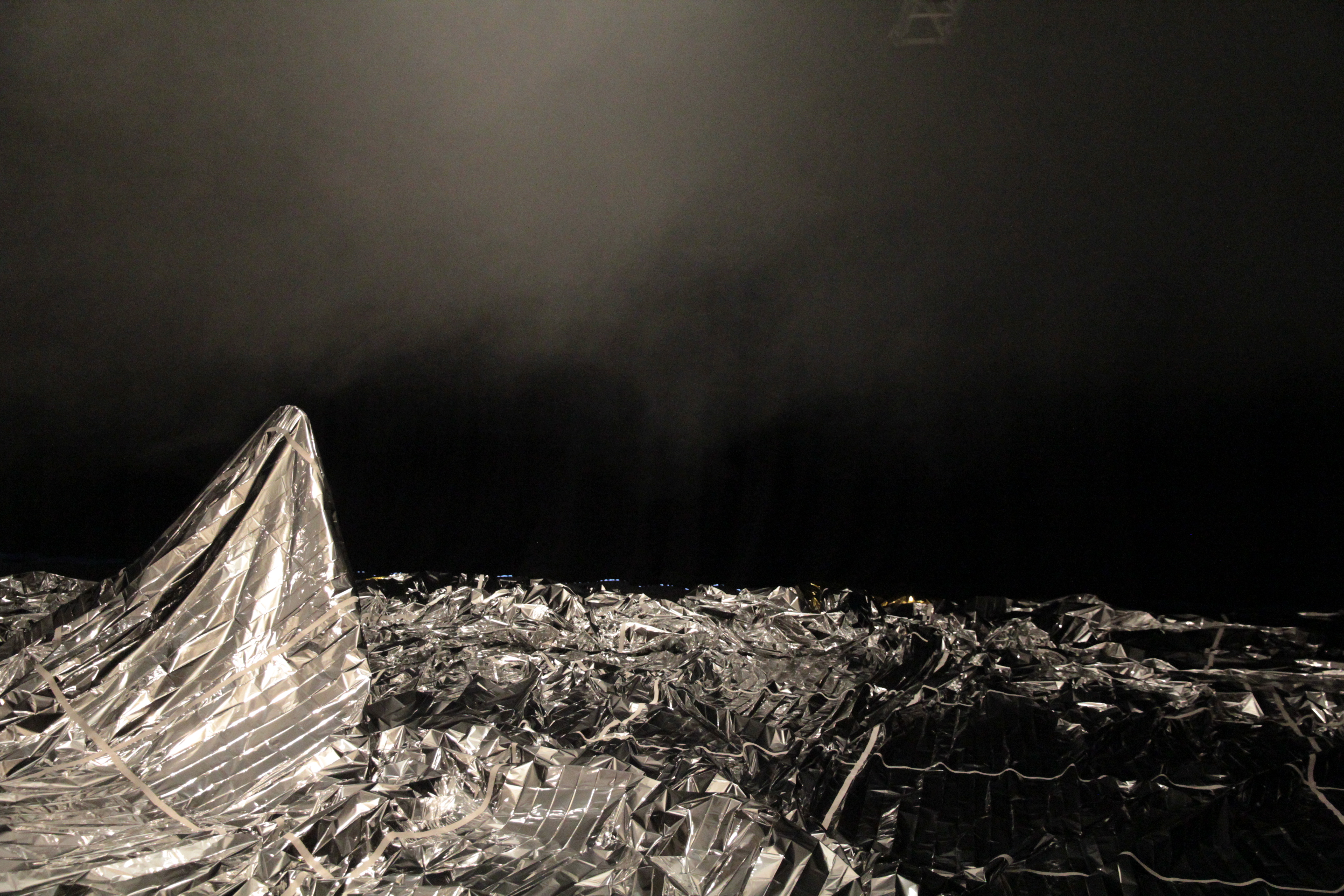epoche-lacan-orbits | kelley-gander-floyer (2013 ~>)
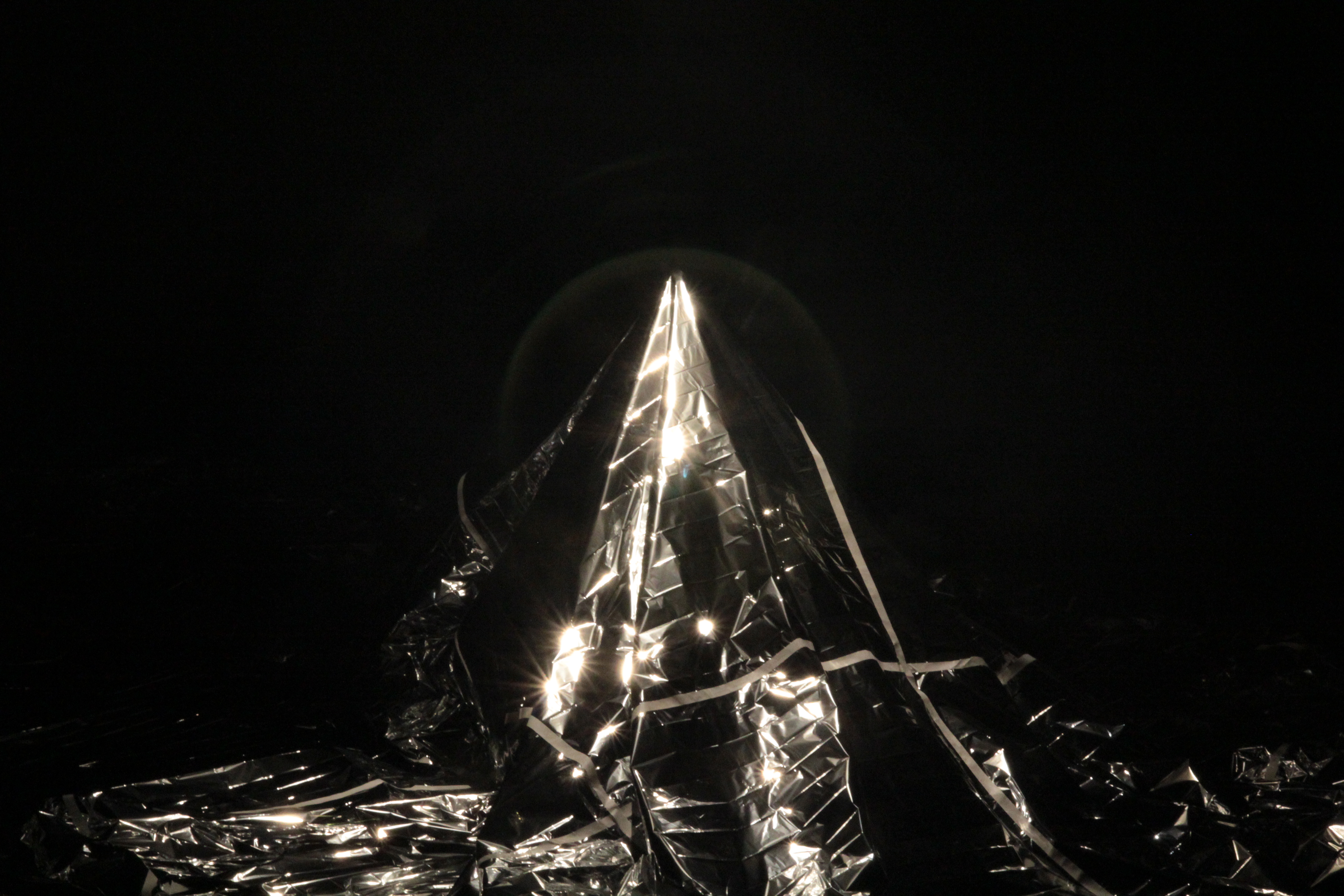
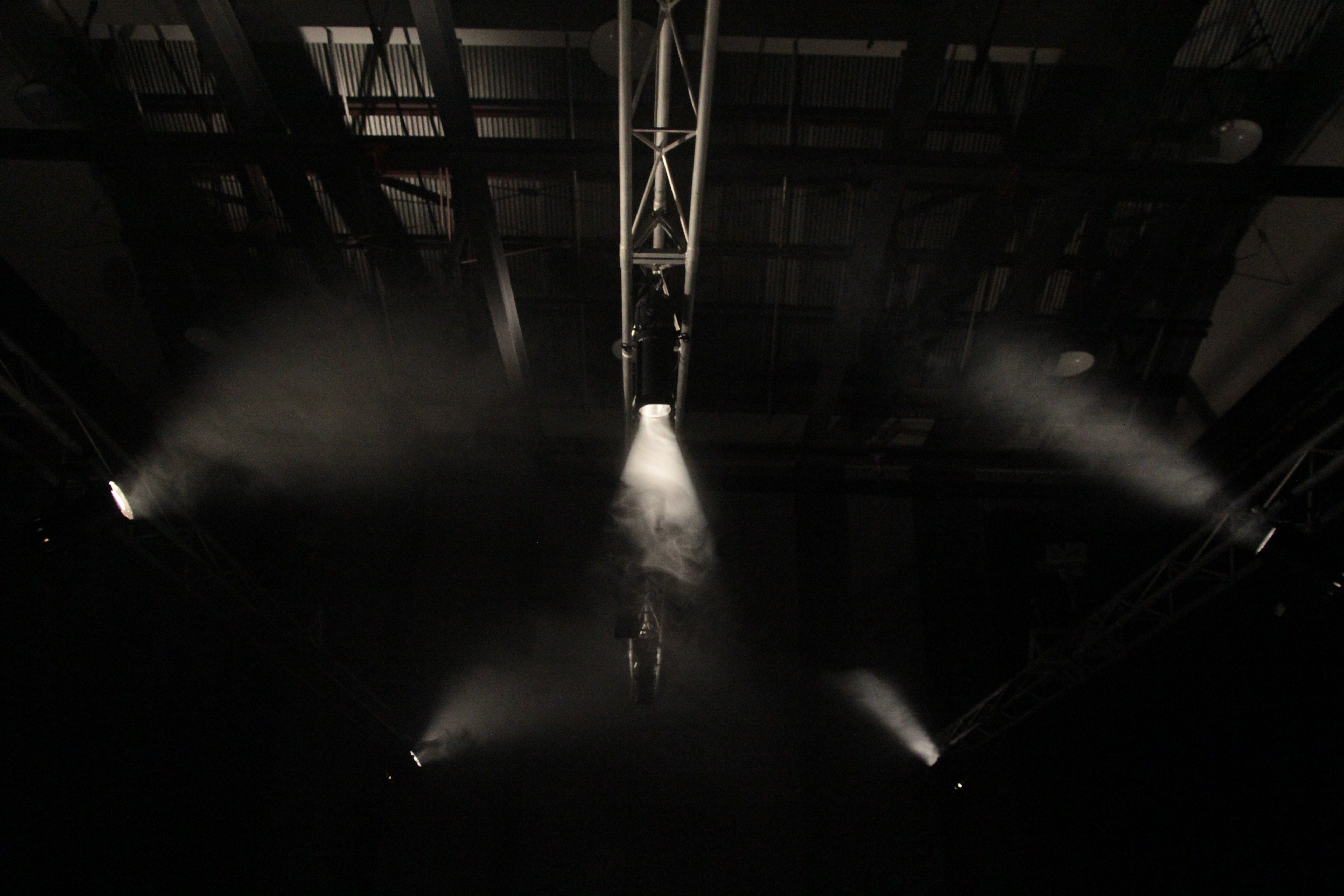
The first stage development of epoche-lacan-orbits was called kelley-gander-floyer; a score for 100 performers, who over an hour, are invited to utter or absorb some of the aggregated material, consisting of huge amount of correspondence, conversations, academic papers, dramatic monologues, and spoken arguments. This text is placed in the ears of the performers, Ivan’s vocal takes recorded in Track 12 of Carriageworks. As a result, the ambient noise of the room, from install noises in the foyer, to passing trains rumbling are captured. The text was recorded repeatedly, each time erasing the existing vocal take. The heard voice is exhausted, often soporific and laboured, occasionally making errors – the typed line being performed again and again. The speaking voice is laid over the music of James Brown, Austin Buckett, Lachlan Hughes, and Marcus Whale, which is collaged on top of each other without identification. Each performer hears a unique, accompanied narration through identical headsets, the technology of which means that the ‘line’ of the recording must be left to pass its full duration before repeating – there is no way to skip forward or alter the time.
The performers are spatialised, orbits around the space around sections of light, in and out of the room – track 12 is but one in a constellation of performance sites which make up Carriageworks. Choreography is delivered as actions, designed to provoke an appropriate response from Ivan. The ‘ensemble’ that attempts this without an understanding of the performance language, has no hope of interpreting the work cohesively, especially upon ‘sight reading’.
As well as orbiting performers in and around the building, the recordings operate in and around the building. The theatre curtains move in circles, in sections, around the room, letting in ambient light and then shutting it off. A timed haze attenuates with passing time and the opening of doors, The performers move in and out of the focused performance space and the larger world.
The performers are invited to wear visors made of mylar rectangles on a circlet of wire. The thick mylar is a tinted lens, and in a spotlit black-box, one proceeds cautiously. As they move through the space, and as gentle wind enters the space, the mylar ripples, distorting light, distorting the vision. As the large doors of the room are opened and closed, the woolen curtains billow.
Steel sections are in the four corners of the room – they move inward. The curtains orbit the room, spilling natural light into the space and then closing it off as well. Lying in the corridor outside is a golden mylar blanket, with the same footprint as the interior, but crumpled. There have been people lying underneath it from the beginning, delivering text as dialogue. The doors open to the exterior and there is a vehicle parked; an evacuation of sorts. Some of the performers perform for 70 minutes, others for 90 minutes.
A publication was produced, with selected texts, images, documentation, and details of commissioned oil paintings on mylar by Neil Addison Beedie, made from documentation images. 200 pages (colour), 200gsm wire-o bound, edition of 100, 2013. Copies available on request.
epoche-lacan-orbits was conceived as a 'gesamtkunstwerk' about genius, prodigy, investment potential, and was interested in performing a suspension; in time, class, particle, air, sound, structure, image. To locate these varying suspensions is to consider or discard the constructs which hold them aloft. What are the varying levels of purity or of decay, and how can this best be translated? One can have a codex of naturalisms, then manipulate it to form lines of understanding, but how many times is a suspension derived from a singular thread?
The first stage examines venue as prescribed multi-function, super-imposing frameworks and working with the space at capacity, but otherwise vacant. Using past notations, contexts, recordings, referential movements, a model of the mind is formed, and then we might be able to view these potentialities in one mirror?
The second stage, EVEN, began to transfer the materials onto more specific bodies, time having passed and a global crisis towering more than ever. Working with a group of children between 3 and 9 as well as adult collaborators, this stage is co-presented by Chamber Made Opera and Fed Square Creative Program.
This project, commissioned in 2013 by Carriageworks in Sydney, was intended to find form in a cycle of performances and series of publications based on a deliberate process of collaborations and commissions over three years.
